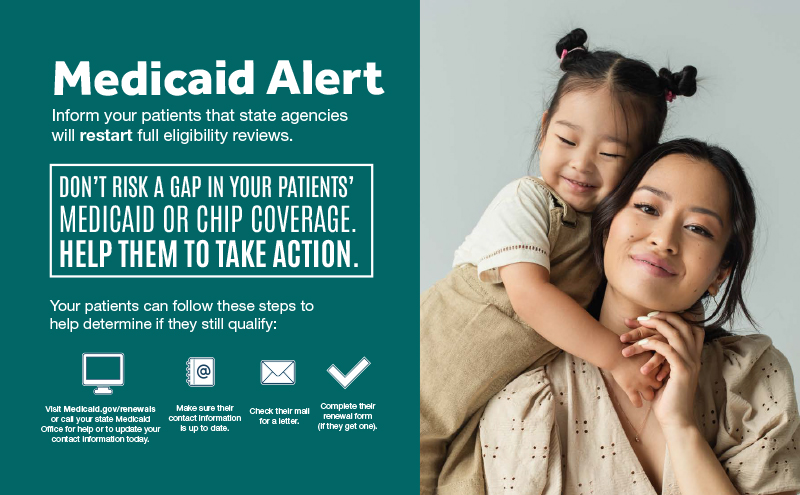By Kirstin Woody Scott, MD, MPhil, PhD and Sar Medoff, MD, MPP on behalf of the Medicaid subcommittee of the ACEP State Legislative/Regulatory Committee
Medicaid and CHIP provide critical insurance coverage to over 91 million patients nationally, many of whom turn to the ED for care each year. Though Medicaid typically involves a complex annual eligibility renewal process, these requirements had been waived throughout the COVID-19 pandemic and state agencies have been required to keep Medicaid and CHIP enrollees continuously enrolled in order to receive enhanced federal funding.
Since February 2020, more than 20 million people have newly enrolled in Medicaid/CHIP and have benefited from this continuous enrollment process. However, with the end of the federal Public Health Emergency (PHE), state Medicaid offices can embark upon a formal “redetermination” process and disenroll those individuals from Medicaid and CHIP who no longer qualify as of April 2023.
This is what has become known as “Medicaid Unwinding.” An estimated 15 million people will lose Medicaid or CHIP coverage during the unwinding period either due to a loss in eligibility or simply administrative churning (e.g., unable to be contacted and/or unaware of need to show proof of eligibility). A December 2022 survey conducted by the Kaiser Family Foundation showed that a majority (62%) of Medicaid-enrolled families were not aware of upcoming renewals, It's critical that we increase awareness.
While some individuals who are disenrolled due to unwinding may be eligible for other insurance plans, such as through new employers or through state/federal marketplaces, many will become uninsured. As Medicaid Unwinding evolves, EDs are likely to see an increase in the number of uninsured patients, as well as those experiencing disruptions in care and difficulty accessing primary care due to insurance changes.
As emergency medicine physicians, it is critical to be aware of Medicaid Unwinding as it can affect your patients’ ability to obtain stable health care outside of the ED as well as your department’s financial health with this anticipated change in payor mix.
Consider doing the following:
- Frontlines: Encourage your patients with Medicaid (and their family) to reach out to their Medicaid office to confirm their contact information is up to date and to ensure they will remain eligible.
- Hospital level: Advance conversations with your ED and hospital leadership to learn what steps are being taken to inform Medicaid patients of the need to update their contact information to their Medicaid office so they receive notifications for potential disenrollment. How are social workers and case managers involved? Consider posting flyers in your ED that inform patients about Medicaid coverage and Medicaid Unwinding. David Wright, the CMS Director of Quality, Safety, and Oversight, has given EDs safe harbor to post the Medicaid Unwinding posters and other communication provided by CMS.
- Clinician collaboration level: Collaborate with fellow EM physicians, pediatricians, family medicine, primary care physicians, state medical associations and ACEP State chapters to mitigate the unnecessary insurance losses that are expected with Medicaid Unwinding, especially those that result from administrative churning. Many states have health advocacy organizations, such as Georgians for a Healthy Future and Kentucky Voices for Health, at the forefront of advocacy and outreach about Medicaid Unwinding. Contact Dr. Medoff if interested in learning more.
- State and the national level: State Medicaid offices are supposed to follow particular rules in this process, such as good faith efforts to contact enrollees and providing information about subsidized exchange plans to people with incomes too high for Medicaid. It is likely that some states are better equipped to provide these notifications than others.
What is your state Medicaid office doing to notify patients? Are there any news stories on the timeline or challenges to appropriately notifying patients of their eligibility status? Submit your stories.


